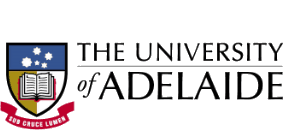SuperSites
Wombat Stringybark Eucalypt SuperSite
TERN’s Wombat Stringybark Eucalypt SuperSite is in the Wombat State Forest, near Ballarat, Victoria. The site’s 35 m tall flux tower was installed in 2010 with the overarching aim of investigating the impacts of climate change and disturbances, such as fire and drought, on the dry sclerophyll eucalypt forests in southeast Australia.
In addition to a core flux tower there are three satellite sites within a one km radius of the tower. The satellite sites have additional infrastructure that reduces rainfall at them by 40% to simulate drought conditions and allow studies of ecosystem responses. The Dja Dja Wurrung peoples are the traditional owners at Wombat.
Site Infrastructure & Characteristics

SuperSite Research Infrastructure
- One eddy-covariance flux tower
- Greenhouse Gas chambers connected to a Fourier Transformed Infrared gas analysis system
- Phenocams
- Airborne and on-ground LiDAR and hyperspectral imagery calibrated using SLATS star transects, leaf sampling, tree structure and LAI measurements

SuperSite Details
- Vegetation type: Eucalyptus obliqua, Eucalyptus radiata and Eucalyptus rubida forest
- Elevation: 702 m
- Rainfall: ~936 mm/yr
- Mean Temperature: 11.4°C
Soils: Acidic-mottled, Dystrophic, Yellow Dermosol
Site Research
Experimental plots at the Wombat SuperSite with rainfall reduction treatments are being used to study the effect of rainfall reduction and drought on the carbon and greenhouse gas cycles. These experimental approaches will allow a better understanding of the processes that control the carbon and greenhouse gas balance in the dry eucalypt forest systems in Australia. Therefore, researchers will be able to make a prediction of how changes in our climate will influence the carbon exchange processes in forests, and the vulnerabilities of these forests with regard to their carbon balance.
Featured Dataset
This dataset consists of measurements of the exchange of energy and mass between the surface and the atmospheric boundary-layer in semi-arid Mulga woodland, using eddy covariance techniques.
More Datasets
Site Partners


Research Publications
Since its inception, TERN’s infrastructure has enabled the publication of more than 1600 peer-reviewed scientific journal articles or books.






